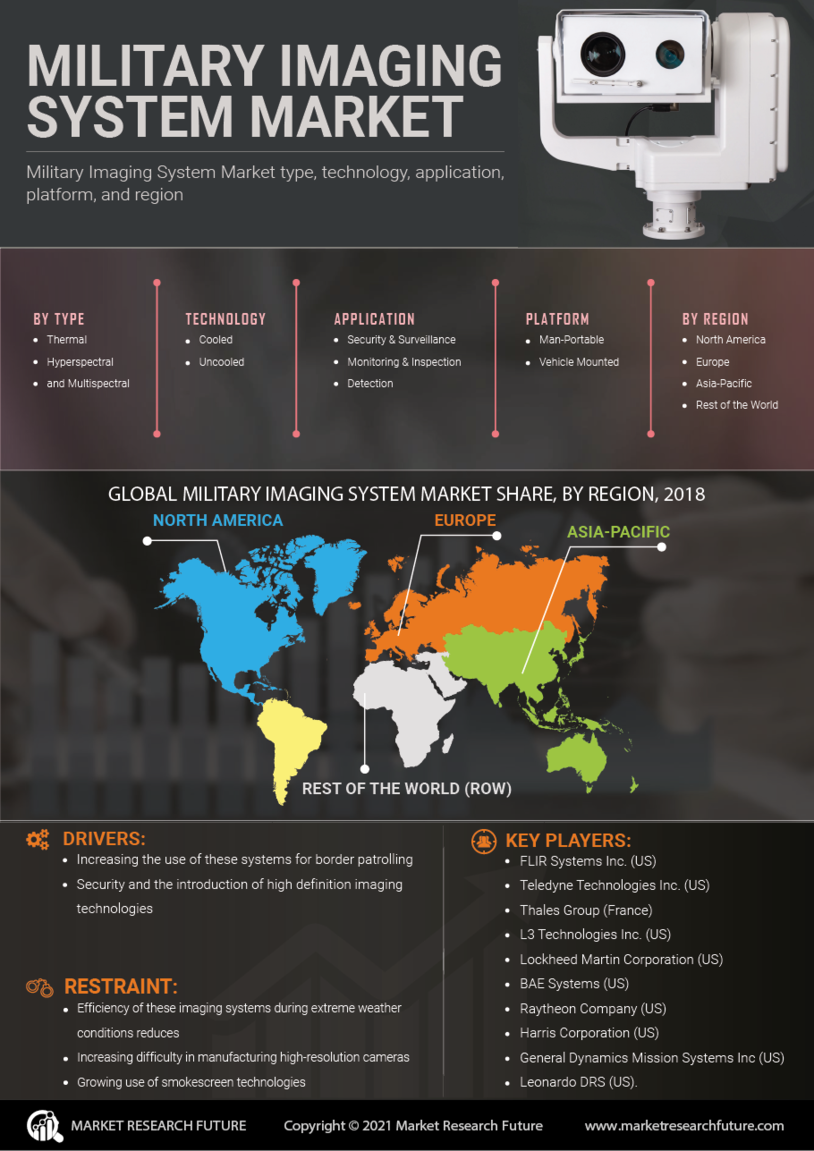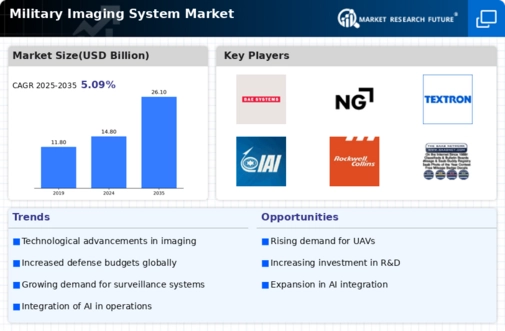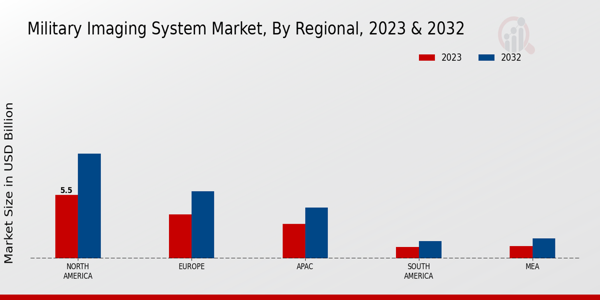Emerging Markets
Emerging markets are playing a pivotal role in the expansion of the Global Military Imaging System Industry. Countries in Asia-Pacific and Latin America are increasingly investing in military modernization, driven by the need to enhance their defense capabilities. For example, nations like Brazil and South Korea are focusing on upgrading their military imaging systems to improve operational efficiency. This trend is expected to contribute to the overall market growth, with a projected CAGR of 5.28% from 2025 to 2035, reflecting the rising demand for advanced imaging technologies.
Geopolitical Tensions
Geopolitical tensions and conflicts are contributing to the growth of the Global Military Imaging System Industry. As nations face increasing threats, there is a heightened focus on surveillance and reconnaissance to ensure national security. For instance, ongoing conflicts in regions such as Eastern Europe and the Middle East have prompted countries to invest in advanced imaging technologies to monitor potential threats. This environment fosters a robust demand for military imaging systems, which is anticipated to propel the market towards a valuation of 26.1 USD Billion by 2035.
Increased Defense Budgets
A notable driver of the Global Military Imaging System Industry is the increase in defense budgets across various nations. Countries are prioritizing modernization of their military capabilities, leading to substantial investments in advanced imaging systems. For example, nations such as the United States and India have allocated significant portions of their defense budgets to enhance surveillance and reconnaissance capabilities. This trend not only boosts the demand for military imaging systems but also supports the overall market growth, with projections indicating a market value of 14.8 USD Billion in 2024.
Market Growth Projections
The Global Military Imaging System Industry is projected to witness substantial growth over the coming years. With an estimated market value of 14.8 USD Billion in 2024, the industry is expected to expand significantly, reaching 26.1 USD Billion by 2035. This growth is underpinned by a compound annual growth rate of 5.28% from 2025 to 2035, reflecting the increasing demand for advanced imaging technologies in military applications. The market's expansion is driven by various factors, including technological advancements, increased defense budgets, and geopolitical tensions.
Technological Advancements
The Global Military Imaging System Industry is experiencing rapid technological advancements, particularly in sensor technology and image processing capabilities. Innovations such as high-resolution thermal imaging and multispectral sensors enhance situational awareness and target acquisition. For instance, the integration of artificial intelligence in image analysis allows for real-time data processing, which is crucial for modern military operations. This trend is expected to drive the market's growth, contributing to an estimated value of 14.8 USD Billion in 2024 and potentially reaching 26.1 USD Billion by 2035, with a CAGR of 5.28% from 2025 to 2035.
Integration of AI and Machine Learning
The integration of artificial intelligence and machine learning technologies into military imaging systems is a significant driver for the Global Military Imaging System Industry. These technologies enable enhanced data analysis, predictive maintenance, and automated target recognition, which are crucial for modern warfare. For instance, AI algorithms can process vast amounts of imaging data to identify threats more efficiently. This trend is likely to increase the market's value, contributing to an estimated 14.8 USD Billion in 2024 and potentially reaching 26.1 USD Billion by 2035.






















Leave a Comment